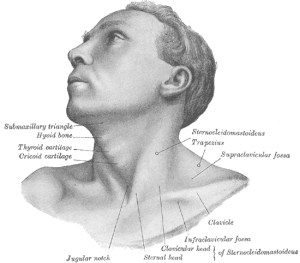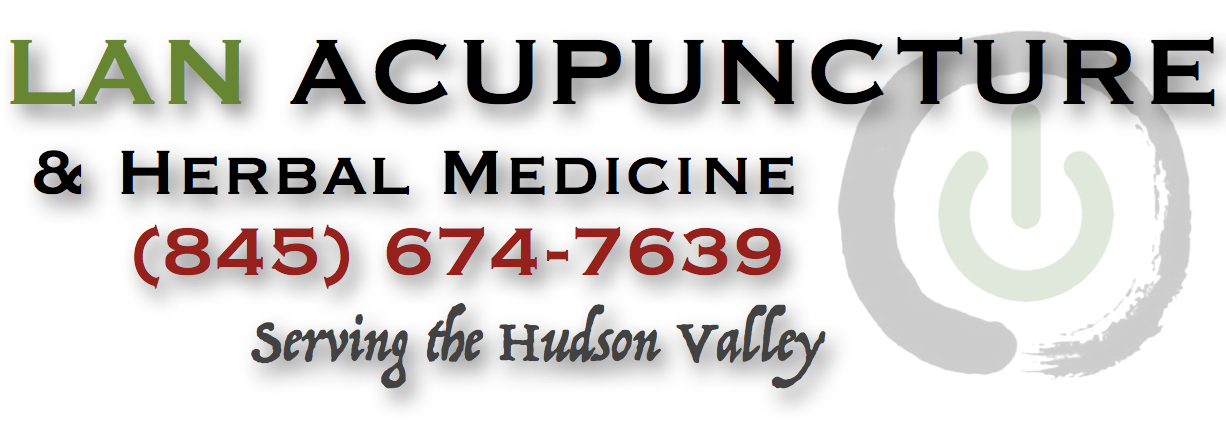TweetShare
Acupuncture relieves neck pain and improves range of motion. Chen et al. find acupuncture effective in alleviating cervical spondylosis, a painful disorder caused by intervertebral disc degeneration. Zeng et al. conclude that acupuncture alleviates cervical spondylosis and radiculopathy. The data demonstrates that acupuncture is more effective than NSAIDs (non-steroidal anti-inflammatory drugs). Zhou et al. find acupuncture effective for the alleviation of pain after surgery to the cervical spine. Li et al. conclude that acupuncture plus herbal medicine is effective for the relief of spasmodic torticollis, a disorder wherein the head becomes turned to one side, often due to painful muscle spasms. Liu et al. find acupuncture plus herbs effective for the relief of neck and shoulder pain.
 Let’s take a look at each one of these discoveries. Chen et al. measured the effects of acupuncture on cervical spondylosis. Their findings indicate that a combination of auricular acupuncture with body style acupuncture is more effective than body style acupuncture as a standalone procedure.
Let’s take a look at each one of these discoveries. Chen et al. measured the effects of acupuncture on cervical spondylosis. Their findings indicate that a combination of auricular acupuncture with body style acupuncture is more effective than body style acupuncture as a standalone procedure.
Recovery was defined as: asymptomatic, muscular strength returned to normal, neck and limb function returned to normal, patient can return to normal work life and carry out more labor intensive activities. Significantly effective was defined as: mitigation of overall symptoms, neck and limb functional improvement, less pain of the neck, shoulder, and back.
Participants received acupuncture every other day for a total of ten sessions of care. Auricular acupuncture, also known as ear acupuncture, was applied to the intersecting region of the thoracic and cervical spine area on the outer ear. The needle was threaded subcutaneously through the cervical spine area. Needle retention time was thirty minutes and manual stimulation was applied 2 – 3 times during needle retention with 5 – 7 rotations each time.
Mild reinforcing and reducing techniques were applied to elicit deqi. Needle retention time was thirty minutes, timed from the arrival of deqi. The researchers conclude that auricular acupuncture combined with body style acupuncture is highly effective in the treatment of cervical spondylosis.
The findings are consistent with those of Zeng et al. whose research at the Guangzhou Dongsheng Hospital finds acupuncture plus herbs effective for the treatment of cervical spondylosis and related radiculopathy. The Traditional Chinese Medicine (TCM) group receiving both acupuncture and herbs had a 96.67% total effective rate. The control group received pharmaceutical medications and had an 83.33% total effective rate.
The control group received an NSAID (diclofenac) and mecobalamin (a form of B12). Diclofenac was administered in 75 mg doses, once per day. B12 was administered in 0.5 mg doses, three times per day. The drugs were administered for twenty days.
For pain or numbness of the taiyang meridian the researchers added Houxi (SI3). Manual stimulation was applied to acupoints until the arrival of deqi. Next, electroacupuncture was applied to 3 – 4 acupoints with a continuous wave. Intensity was set to tolerance levels. Additional manual techniques were applied to 1 – 2 spots of localized pain using the green dragon tail sweeping method. Needle retention time was thirty minutes per acupuncture session. A total of twenty acupuncture treatments were applied at a rate of once per day.
Herbal medicine was decocted in water and was administered orally once in the morning and also at night for twenty days.Acupuncture plus herbs yielded a 96.67% total effective rate and the medications yielded an 83.33% total effective rate. Acupuncture outperformed the medication group by 13.34%. The researchers conclude that acupuncture plus herbs is effective for the alleviation of cervical spondylosis and associated radiculopathy.
Foshan Chinese Medicine Hospital researchers (Zhou et al.) looked at a very different type of neck pain. Their investigation examined the efficaciousness of electroacupuncture as a means to minimize pain after cervical spine surgery. Perioperative application of electroacupuncture to LI4 (Hegu) and PC6 (Neiguan) successfully reduced pain after surgery. In addition, patient controlled analgesia requests dropped sharply.
Several other clinical advantages to perioperative acupuncture were documented by the researchers. Electroacupuncture significantly reduced the dosage needs for remifentanil (synthetic opioid analgesic) and propofol (sedative). Acupuncture stabilized the heartbeat rate and the average arterial pressure. In addition, the time needed to regain consciousness after surgery was reduced by acupuncture. The time reduced from an average of 22.31 minutes for the medication only group to 7.01 minutes for the acupuncture plus medication group. Electroacupuncture significantly reduced the frequency of nausea, vomiting, and constipation after surgery.
LI4 and PC6 were needled perpendicularly and manual stimulation was applied to elicit the arrival of deqi. Continuous wave electroacupuncture was applied with a frequency increasing from 100 Hz to 1,000 Hz. The researchers concluded that electroacupuncture is effective in providing significant pain relief and minimizes complications due to surgery of the cervical spine.
Tianjin University of Traditional Chinese Medicine First Hospital (Li et al.) researchers document that acupuncture frees neck movement and stops pain. Their research also finds that combining Chinese herbal medicine with acupuncture increases the efficacy rate. A one year follow-up demonstrated that the acupuncture plus herbs protocol provides significant long-lasting clinical results.
Exclusion criteria were applied. For example, CT scans were used to ensure that participants did not have intracranial lesions. X-rays ruled out cervical spondylosis. Neurophysiological exams were used to determine inclusion criteria for spasmodic torticollis.
The treatment protocol featured strong acupuncture techniques. Bird-pecking-pulling (Que Zhuo Xie) manual acupuncture was applied to acupoint Shuigou (DU26) upwardly at 45˚. A pulling technique (Ti Cha Xie Fa) was applied with perpendicular insertion to Laogong (PC8) and Yongquan (KD1). Que Zhuo Xie was applied to Baihui (DU20) and Yintang was inserted to the bridge of the nose.
The herbs were decocted once per day and were administered in two doses, one in the morning and one at night. Outcomes measures included documentation of range of motion changes, shoulder lift, twitching, and tremors. The researchers concluded that acupuncture is effective for the treatment of spasmodic torticollis but acupuncture plus herbs is even more effective.
Liu et al. find acupuncture plus herbs effective for the relief of neck and shoulder dysfunction characterized by pain, numbness, inflammation, range of motion impingement, and hypodynamia (decrease in strength). The researchers commented that, statistically, white collar workers that spend a great deal of time sitting at a desk are particularly susceptible to this condition. In these cases, workers noted that their neck and shoulder tension and pain was partially alleviated by days off from work.
Manual needle stimulation was applied while patients actively and passively moved the neck and shoulder. Needle retention time was twenty minutes for this portion of the treatment session. Supplementary points were added for specific indications. For these points, electroacupuncture was applied. For posterior neck pain, Houxi (SI3) was added. For dampness, Fenglong (ST40) was added. For blood stasis, Xuehai (SP10) was added. An additional twenty minutes of needle retention time was added for the secondary electroacupuncture portion of the treatment session.
Herbal medicine was prescribed based on diagnostics. Patients with cold type pain were given Xiao Yao San. If neutral temperatures were determined, Si Ni San was prescribed. Dan Zhi Xiao Yao San was prescribed for patients with heat. For patients with deficiency, a combination of Xiao Yao San and Dang Gui Shao Yao San was prescribed. For cases of excess, Chai Hu Shu Gan San with Si Ni San was prescribed. Customization formulas based on differential diagnostics included the addition of herbs including Bai Shao, Gui Zhi, Huang Qi, Chai Hu, Fu Ling, and Ge Gen.
The researchers note that both the total recovery rate and the total effective rate was significant for participants receiving acupuncture plus herbs. All of the aforementioned studies indicate that acupuncture is an effective modality for the treatment of neck pain. The investigations demonstrate a variety of clinical scenarios and treatment protocols for the resolution of neck pain using acupuncture or acupuncture plus herbs.
For more information, please contact us! We are near Newburgh, Walden, Cornwall, and Marlboro, Orange County. we are also in Glen Rock, near Ridgewood, in Bergen County.
Excerpt from:
Acupuncture More Effective than NSAIDS for Neck Pain and Stiffness







